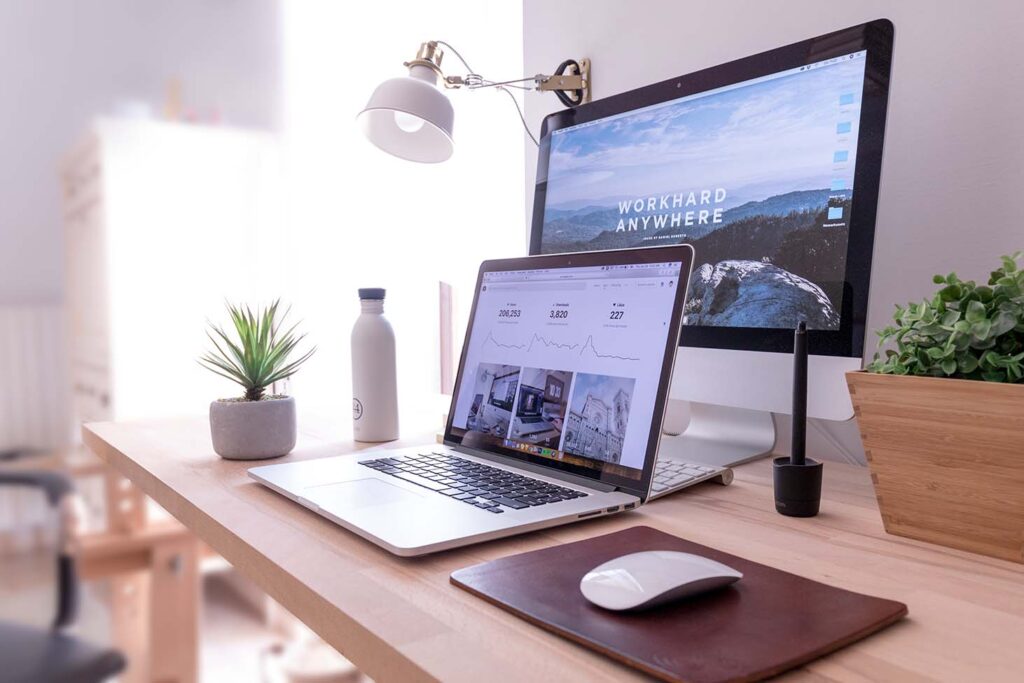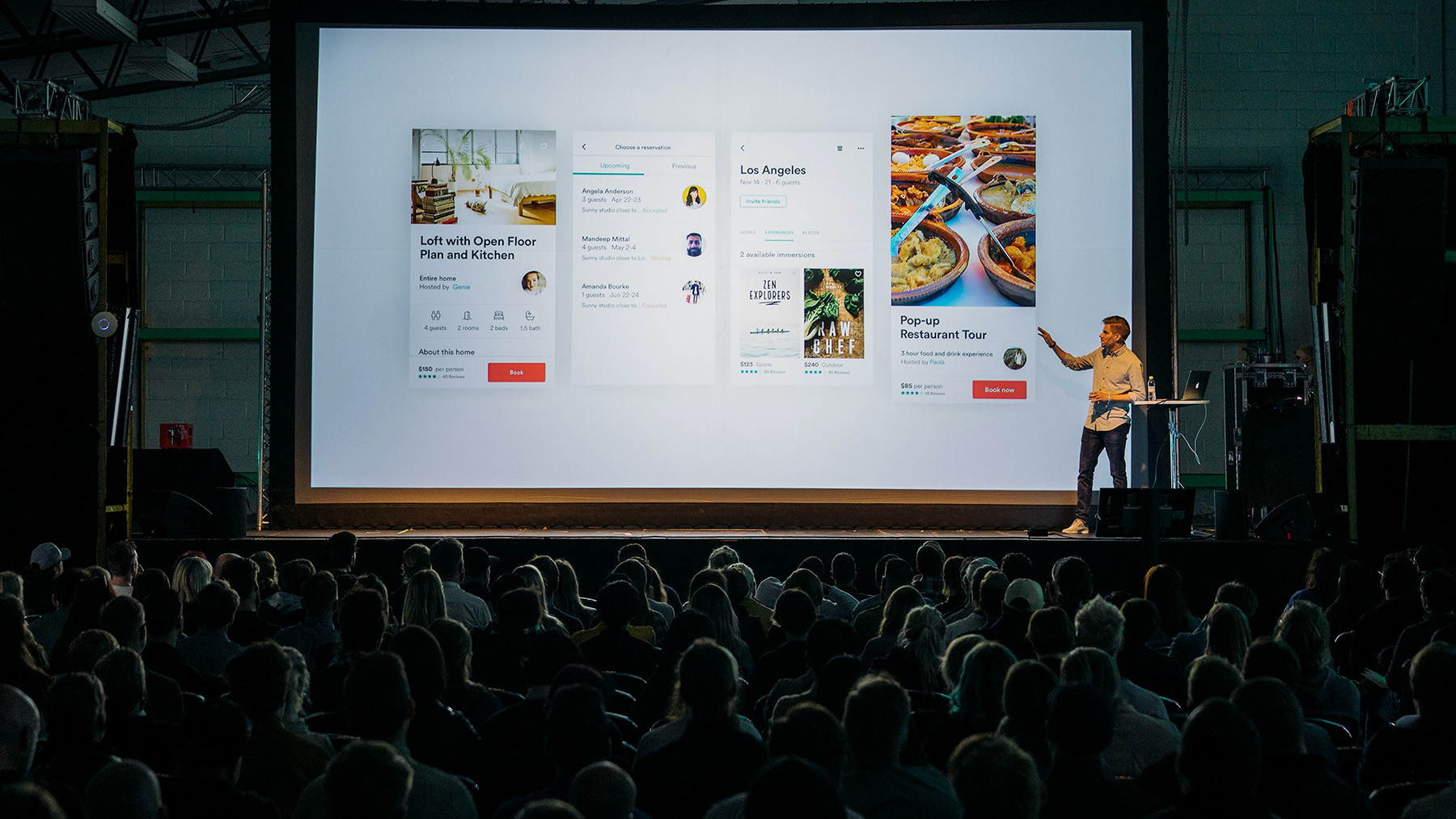When it comes to creating a website, web design is an essential aspect that should not be overlooked. Web design involves the planning, creation, and execution of a website’s layout, structure, and overall appearance. It is the process of combining different elements such as colors, fonts, images, and text to create an aesthetically pleasing and functional website.
To get started with a web design for your business, you need to understand the key concepts and fundamentals of web design basics. This includes learning about the purpose of your website, identifying your target audience, and creating a site structure that is easy to navigate. Additionally, you need to familiarize yourself with different design elements such as typography, color theory, and layout principles.
By mastering the basics of web design, you will be able to create a website that not only looks great but also meets the needs of your target audience. Whether you are designing a website for personal or business use, understanding the key concepts of web design basics is crucial to creating a website that is user-friendly, visually appealing, and effective in achieving its goals.
Table of Contents
ToggleUnderstanding Web Design
If you’re just starting out with web design, it can be overwhelming to know where to begin. Web design involves creating websites that are visually appealing, user-friendly, and functional. A well-designed website can help establish credibility and trust with visitors, which can ultimately lead to more conversions.
Website design involves a variety of elements, including layout, typography, color, and imagery. It’s important to consider the purpose of your website and your target audience when designing these elements. For example, a website designed for a younger audience may use brighter colors and more playful typography, while a website designed for a professional audience may use more muted colors and a more formal font.
When designing a website, it’s important to keep in mind the principles of design. These principles include balance, contrast, emphasis, and unity. Balance refers to the distribution of visual weight on a page, while contrast refers to the difference between elements on a page. Emphasis is used to draw attention to certain elements, and unity refers to the overall coherence of the design.
In addition to these design principles, it’s important to consider the functionality of your website. This includes factors such as navigation, page speed, and mobile responsiveness. A well-designed website should be easy to navigate and load quickly, and should look good on a variety of devices.
Overall, understanding the basics of web design can help you create a website that is visually appealing, user-friendly, and functional. By considering the purpose of your website, your target audience, and the principles of design, you can create a website that helps establish credibility and trust with your visitors.
Importance of UI and UX
When it comes to web design, User Interface (UI) and User Experience (UX) are two crucial elements that can make or break the success of a website or application.
User Interface
UI design focuses on the visual aspects of a website or application, including the layout, color scheme, typography, and other design elements that users interact with. A well-designed UI can make it easy for users to navigate a website or application and find the information they need quickly and efficiently.
To create an effective UI, it is important to conduct user research to understand the needs and preferences of your target audience. This can include analyzing user behavior, conducting surveys or focus groups, and testing prototypes to gather feedback.
User Experience
UX design focuses on the overall experience that users have when interacting with a website or application. This includes everything from the ease of use and navigation to the emotions and feelings that users have while using the product.
To create an effective UX, it is important to consider the needs and goals of your target audience and design a product that meets those needs. This can include conducting user research, creating user personas, and testing prototypes to gather feedback.
Good UX design can lead to increased user satisfaction, improved brand loyalty, and higher conversion rates.
In summary, UI and UX are two essential components of web design that work together to create a positive user experience. By understanding the needs and preferences of your target audience and designing a product that meets those needs, you can create a website or application that is both visually appealing and easy to use.
Web Design Elements
When designing a website, there are several elements that you need to consider to make it visually appealing and user-friendly. In this section, we will discuss some of the most important web design elements and how you can use them to create a great website.
Typography
Typography is the art and technique of arranging type to make written language legible, readable, and appealing when displayed. When selecting a font for your website, consider the readability, style, and size. It’s best to choose a font that is easy to read and matches the tone of your website. You can also use different font sizes and styles to create a hierarchy of information on your website.
Colors
Colors play an important role in web design. They can evoke emotions, create contrast, and make your website stand out. When choosing a color scheme for your website, consider your brand identity and the emotions you want to convey. You can also use different shades and tones of a color to create depth and contrast.
Images
Images are a great way to convey information and emotions on your website. They can also break up text and make your website more visually appealing. When selecting images for your website, make sure they are high-quality and relevant to your content. You can also use different image sizes and layouts to create interest and variety.
Lines
Lines are a simple yet effective way to create structure and hierarchy on your website. They can be used to separate content, create grids, and draw attention to important elements. When using lines on your website, make sure they are consistent and match the overall style of your website.
Shapes
Shapes can be used to create interest and variety on your website. They can also be used to draw attention to important elements and create a sense of movement. When using shapes on your website, make sure they are consistent and match the overall style of your website.
Texture
Texture can be used to create depth and interest on your website. It can also be used to evoke emotions and create a sense of realism. When using texture on your website, make sure it is consistent and matches the overall style of your website.
In conclusion, by carefully considering the web design elements of typography, colors, images, lines, shapes, and texture, you can create a visually appealing and user-friendly website.
Website Layouts
When designing a website, one of the most important aspects to consider is the layout. A website’s layout refers to how the content is arranged on the page. A well-designed layout can help make a website more visually appealing, easier to navigate, and more effective at achieving its goals.
Grid System
One of the most common ways to create a website layout is to use a grid system. A grid system is a framework that helps designers organize content on a page. By dividing the page into a grid, designers can create a more structured and organized layout.
When using a grid system, it’s important to consider the size and spacing of each element on the page. Elements should be aligned and spaced in a way that creates a balanced and visually appealing layout.
Visual Hierarchy
Another important aspect of website layout is visual hierarchy. Visual hierarchy refers to the arrangement of elements on a page in order of importance. By using different sizes, colors, and styles, designers can create a hierarchy that guides the user’s eye through the page.
When creating a visual hierarchy, it’s important to consider the goals of the website. Elements that are most important to achieving those goals should be given more prominence on the page.
Balance
Balance is another important aspect of website layout. A balanced layout helps create a sense of harmony and stability on the page. When designing a layout, it’s important to consider the balance of elements on the page. Elements should be arranged in a way that creates a sense of equilibrium.
Unity
Finally, unity is an important aspect of website layout. Unity refers to the overall coherence of the design. A unified design helps create a sense of continuity and consistency throughout the website.
When creating a layout, it’s important to consider how each element fits into the overall design. Elements should be chosen and arranged in a way that creates a cohesive and unified design.
Overall, a well-designed website layout can help make a website more effective and visually appealing. By using a grid system, creating a visual hierarchy, considering balance, and striving for unity, designers can create layouts that are both functional and aesthetically pleasing.
Web Design Languages
When it comes to web design, there are several programming languages that you need to be familiar with. These languages are used to create the structure, layout, and functionality of a website. Here are the most common web design languages:
HTML
HTML (HyperText Markup Language) is the backbone of web design. It is used to create the structure and content of a web page. HTML uses tags to define different elements on a page, such as headings, paragraphs, images, and links. Without HTML, a web page would be just a plain text document.
CSS
CSS (Cascading Style Sheets) is used to define the style and layout of a web page. It is used to control the color, font, size, and position of different elements on a page. CSS works in conjunction with HTML to create visually appealing and user-friendly websites.
JavaScript
JavaScript is a programming language that is used to add interactivity and functionality to a web page. It can be used to create dynamic effects, such as pop-up windows, drop-down menus, and animations. JavaScript is also used to validate forms and to create interactive games.
PHP
PHP (Hypertext Preprocessor) is a server-side scripting language that is used to create dynamic web pages. It is used to interact with databases, to process forms, and to create e-commerce websites. PHP is a powerful language that is widely used in web development.
ASP
ASP (Active Server Pages) is a server-side scripting language that is used to create dynamic web pages. It is similar to PHP but is used primarily on Windows servers. ASP is used to create e-commerce websites, to interact with databases, and to process forms.
In conclusion, understanding the different web design languages is essential for creating a successful website. HTML, CSS, JavaScript, PHP, and ASP are the most common languages used in web development. By mastering these languages, you can create visually appealing, user-friendly, and functional websites that will attract and engage your audience.
Website Navigation and Structure
When it comes to web design, navigation and structure are two of the most important elements to consider. Your website’s navigation should be intuitive and easy to use, allowing visitors to quickly find the information they’re looking for. At the same time, your site’s structure should be well-organized, making it easy for visitors to understand how your content is organized and where to find what they need.
One key aspect of website navigation is the use of menus. Your site’s main navigation menu should be prominently displayed and easy to find, typically at the top of the page. It should include links to all of the main sections of your site, allowing visitors to quickly jump to the content they’re interested in. You may also want to include secondary menus within specific sections of your site, such as a sidebar menu on a blog page.
Another important aspect of website navigation is the use of breadcrumbs. Breadcrumbs are a navigation aid that show visitors where they are on your site and how they got there. They typically appear at the top of the page, just below the main navigation menu. Breadcrumbs can be especially useful on larger sites with a lot of content, as they help visitors keep track of where they are and how they got there.
When it comes to site structure, it’s important to think about information architecture. This involves organizing your content in a way that makes sense and is easy to understand for visitors. You should start by creating a hierarchy of content, with the most important information at the top and less important information further down. You can then use headings, subheadings, and bullet points to break up your content and make it easier to read.
Finally, it’s important to think about the overall layout of your site. Your site’s layout should be clean and uncluttered, with plenty of white space to make it easy to read. You should also use consistent design elements throughout your site, such as fonts, colors, and images, to create a cohesive look and feel.
By considering these elements of website navigation and structure, you can create a site that is easy to use and understand, and that provides visitors with the information they need quickly and efficiently.
Branding and Web Design
When it comes to web design, branding is a crucial aspect that can help you stand out from the competition. Your website should reflect your brand’s values, personality, and mission. Here are some tips to help you create a website that aligns with your brand:
Incorporate Your Logo
Your logo is the visual representation of your brand, and it should be prominently displayed on your website. Make sure your logo is high quality and visible on every page. You can also use your logo’s colors throughout your website to create a cohesive look.
Evoke Emotion
Your website should evoke the emotions you want your brand to be associated with. Use images, colors, and typography to create a mood that aligns with your brand’s personality. For example, if you have a playful brand, use bright colors and fun images to convey that.
Be Creative
Don’t be afraid to think outside the box when it comes to your website’s design. Use unique layouts, typography, and graphics to create a website that stands out. However, be careful not to sacrifice usability for creativity.
Consistency is Key
Consistency is crucial when it comes to branding. Make sure your website’s design, tone of voice, and messaging align with your brand’s values. Use the same fonts, colors, and imagery throughout your website to create a cohesive look.
By incorporating your logo, evoking emotion, being creative, and maintaining consistency, you can create a website that aligns with your brand and helps you stand out from the competition.
Responsive Web Design
When designing a website, it is important to consider how it will appear on different devices such as phones, tablets, and desktops. Responsive web design is a technique used to create websites that can adapt to different screen sizes and resolutions.
Responsive design makes your website look good on any device, whether it’s a phone, tablet, or desktop. This is achieved by using HTML and CSS to automatically resize and adjust the layout of the website based on the screen size of the device being used.
One of the key benefits of responsive web design is that it provides a consistent user experience across all devices. This means that your website will be easy to use and navigate regardless of the device being used to access it.
To ensure that your website is responsive, you should use a responsive design framework such as W3.CSS. This framework provides a set of pre-designed templates and styles that can be easily customized to fit your website’s needs.
When designing your website, you should also consider the content and layout. For example, you may want to use larger fonts and buttons for mobile users to ensure that they can easily navigate your website on a smaller screen.
In conclusion, responsive web design is an essential aspect of modern web design. By using responsive design techniques and frameworks, you can ensure that your website looks great and is easy to use on any device.
SEO and Web Design
When designing a website, it’s crucial to keep search engine optimization (SEO) in mind. SEO is the practice of optimizing your website to rank higher in search engine results pages (SERPs). By incorporating SEO into your web design, you can improve the visibility of your website and attract more visitors.
One of the most important factors to consider when designing a website for SEO is site speed. Search engines prioritize fast-loading websites, so it’s essential to optimize your website’s loading times. You can do this by minimizing the size of your images and videos, reducing the number of HTTP requests, and using a content delivery network (CDN).
Another critical factor to consider is conversions. Your website should be designed to convert visitors into customers or leads. This means creating clear calls-to-action (CTAs) and making it easy for visitors to navigate your site and find what they’re looking for. You can also use A/B testing to determine which design elements are most effective at driving conversions.
When it comes to SEO, it’s also important to consider the content on your website. Your website should be designed to showcase your content in a way that’s easy to read and navigate. This means using clear headings, bullet points, and other formatting techniques to break up text and make it more scannable.
In summary, incorporating SEO into your web design is essential for improving the visibility of your website and attracting more visitors. By optimizing site speed, focusing on conversions, and creating high-quality content, you can design a website that ranks well in search engine results pages and drives business results.
DIY: Web Design Tools and Resources
If you’re just beginning in business, you may want to bootstrap your own website. It’s better to have something versus nothing, so if this is the only viable option, then go for it.
Of course, nothing replaces experience — before you decide that a professional web designer is “too expensive,” we encourage you to at least have the conversation. Many clients have expressed surprise at our pricing, you may be happily surprised!
Also, you need to be aware that some platforms are proprietary. The only way you can use them is if you continue paying a subscription fee. That can really add up, but more important, it traps you into an ecosystem that may be very difficult to leave.
Even if you eventually hire a web designer, everything on your other platform would need to be migrated manually. Depending on the size of your site, this can add a lot of cost to your project.
We have migrated many clients from other platforms so we speak from experience on this issue.
Having the right tools and resources can make all the difference. Here are a few of the top tools and resources that can help you create stunning websites:
Sketch
Sketch is a semiprofessional-grade design tool that is popular among beginning web and product designers. It allows you to create wireframes, mockups, and prototypes with ease. With Sketch, you can easily create responsive designs that look good on any device. It also has a large library of plugins and integrations that can help you streamline your workflow.
Webflow
Webflow is a website builder that is designed specifically for web designers. It allows you to create responsive designs without having to write any code. With Webflow, you can easily create animations, interactions, and dynamic content. It also has a powerful CMS that can help you manage your content.
Behance
Behance is a platform that allows designers to showcase their work and connect with other designers. It is a great place to find inspiration and discover new design trends. In that regard, it’s not so much a tool you can use for your business to create a website, but rather, a great place to go for ideas. Note that the vast majority of work can be eclectic on this platform so it may be more suited to the creative professions and artists than local business owners.
Awwwards
Awwwards is an another web design showcase with designers from around the world. It features a collection of websites that have been selected by a panel of judges based on their design, usability, creativity, and content. Awwwards is a great place to find inspiration and stay up-to-date on the latest design trends. The caution here is that some trends have deep roots and others are more of a flash in the pan, so keep that in mind.
Choosing a Web Design Agency
The biggest problem we see with design showcases and places that make it easy to create a rudimentary design is that they talk about web design as a singular issue.
If you took our mini-course, then you realize that having a “web design” is not the objective of a successful business owner. A business that is approaching the market to attract more customers is not interested in “web design.” We encourage you to check out that mini course if you have not already. It has saved clients thousands of dollars and years of lost time.
Here’s the big takeaway: NOT focusing on web design will grow your business. That’s a paradox but you’ll see what we mean after you take the course. It’s a no-fluff study, you’ll be able to get through it at your leisure. And we kept jargon to a minimum because we speak your language — business — and that’s what our mutual goal would be if we work together! Here’s the link to sign up.
When it comes to creating a website, choosing the right web design agency is crucial. With so many options available, it can be overwhelming to decide which agency to work with. Here are some key factors to consider when choosing a web design agency:
Review the Agency’s Portfolio
Before hiring a web design agency, it’s important to review their portfolio. This will give you an idea of their design style and the quality of their work. Look for websites that are similar to what you’re looking for in terms of design and functionality.
Consider Your Budget
It’s important to have a clear understanding of your budget before choosing a web design agency. Some agencies may have higher rates than others, so it’s important to find an agency that can work within your budget. However, don’t sacrifice quality for a lower price. It’s better to invest in a quality website that will benefit your business in the long run.
Read Reviews and Testimonials
Reading reviews and testimonials from previous clients can give you insight into the agency’s communication, timeliness, and overall satisfaction. Look for patterns in the reviews and pay attention to any red flags. If an agency has consistently negative reviews (particularly with the same issues), then it may be best to look elsewhere. Quantity of reviews is not really important; look for the substance and tone of the review and what is being said.
The key point here is, if the business owners consistently talk about how we grew their business, then it might be worth having a conversation to see what we can do for you!
Communication and Collaboration
Effective communication and collaboration are key to a successful web design project. Make sure the agency you choose is responsive and communicates clearly. They should also be willing to collaborate with you and take your ideas and feedback into consideration.
Go with someone you feel comfortable with — someone who is not focused on closing the sale or pressuring you into services you don’t need. If it doesn’t feel like a conversation, then it’s probably not a good fit.
In summary, choosing the right web design agency is crucial to the success of your website. Review their portfolio, consider your budget, read reviews and testimonials, and ensure effective communication and collaboration.
Conclusion
In conclusion, understanding the basics of web design is crucial for achieving your goals of creating a visually appealing and user-friendly website. With the right design principles and techniques, you can create a website that is both aesthetically pleasing and functional.
Once your website is live, it’s important to review it regularly to ensure that it is meeting your goals and the needs of your users. This can involve analyzing website traffic, user feedback, and other metrics to identify areas for improvement.
Remember, web design is an ongoing process that requires constant attention and refinement. By staying up-to-date with the latest design trends and best practices, you can ensure that your website remains relevant and effective for years to come.
In summary, the key takeaways from this article include:
- Understanding the layout and structure of a web page is essential for effective web design.
- HTML is the code used to structure a web page and its content.
- Learning the standard web design approaches and being responsive and mobile-friendly are important for creating a user-friendly website.
- The best practices for user interface and user experience should be followed to ensure a positive user experience.
- Ongoing review and analysis of your website is necessary to ensure that it is meeting your goals and the needs of your users.
Frequently Asked Questions
What are the basic principles and elements of web design?
Web design is a combination of principles and elements that work together to create a visually appealing and functional website. The basic principles of web design include balance, contrast, unity, emphasis, and rhythm. The key elements of web design are layout, color, typography, imagery, and white space.
What are some good web design resources?
There are many resources available online that can help you learn about web design. Some of the best resources include online courses, blogs, forums, and design communities. Some popular web design resources include A List Apart, Smashing Magazine, CSS-Tricks, and Web Designer Depot.
What are the 7 phases of the web design process?
The web design process typically involves seven phases: planning, research, wireframing, design, development, testing, and launch. Each phase is important and requires careful consideration to ensure the final product meets the client’s needs and expectations.
What are the 5 golden rules of effective web design?
The 5 golden rules of effective web design are: simplicity, consistency, readability, accessibility, and visual hierarchy. These rules help ensure that the website is easy to use, visually appealing, and accessible to all users.
What are the 5 stages of the web design process?
The 5 stages of the web design process are: discovery, planning, design, development, and launch. Each stage is crucial to the success of the website and requires careful consideration and attention to detail.
What are some popular tools for web design?
There are many tools available to help with web design, including graphic design software, code editors, and content management systems. Some popular web design tools include Adobe Photoshop, Sketch, Sublime Text, WordPress, and Squarespace.




